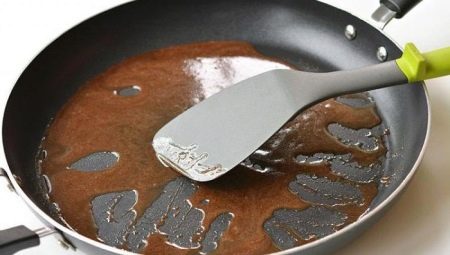A burnt pan is a fairly common problem in the kitchen. Unfortunately, it cannot be cleaned with conventional dishwashing detergents, so special measures must be taken.
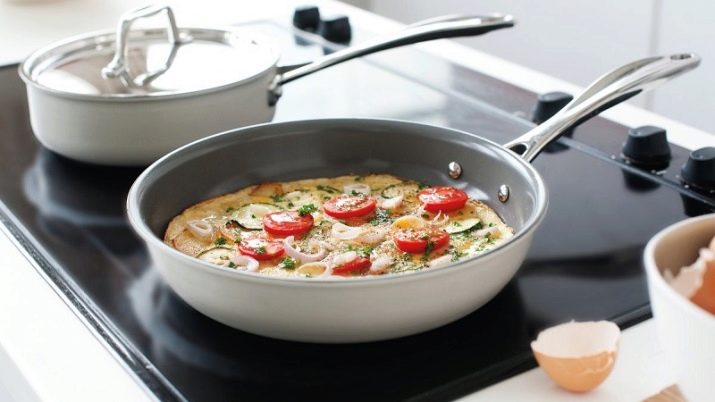
Causes of the problem
In fact, there are a sufficient number of reasons why everything sticks and burns in the pan. Moreover, this problem is also relevant for cookware with non-stick coating, which, it would seem, should save its owner from such a misfortune. It is worth starting with the fact that food begins to stick to the bottom if the purchased dishes were of low quality. For example, a branded non-stick roaster is suitable for use for a couple of years, and a low-quality fake will fail after a month. It happens that food began to burn even with mechanical damage to the surface of the dishes.
This problem is typical for pans with Teflon and ceramic coating, and occurs due to improper use and maintenance. Burning is possible in case of expired containers. Cast iron can serve for many decades, but other materials do not possess such properties. Separately, it is worth highlighting the situation when a frying pan with non-stick coating the coating starts to break down. This situation not only leads to spoilage of products, but also creates the likelihood of health problems.
It happens that problems with burning products are the result of the initial processing of the dishes just purchased. Other factors are tank operation errors.
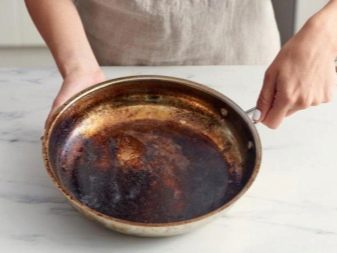

What to do so that the pan does not stick?
To prevent the burning of a cast iron pan, it must be pre-treated. Minimal processing begins with the fact that the newly purchased container is washed under hot water and dried thoroughly. Then the pan is filled with ordinary salt, possibly stone, and removed either in the oven or on the stove, for about 60 minutes. At the end, the salt is shaken, and the dishes themselves are oiled inside with vegetable oil.
To get rid of the problem of pestering products to an aluminum container, it will be necessary to carry out a number of actions. First, on a medium fire, the frying pan becomes hot, and then onto it put bread cubes so as to completely fill the bottom. It will be enough to fry crackers for about 5 minutes, reducing the fire to the weakest. It is believed that a steel pan made of stainless metal does not burn at all, if you follow the rules of operation. Just use the right amount of oil.
Another way to restore an aluminum pan is to use of salt. The washed and dried container is first filled with vegetable oil so that it completely covers the bottom, and the walls remain partially lubricated. Next, a couple of tablespoons of salt are poured there, and the ingredients are gently mixed. The roasting pan is removed to medium heat and maintained in this condition until a haze appears. Next to the pan it is important to let cool. After washing the dishes without detergents, and again, having thoroughly wiped them, you can proceed to direct cooking.
To return the enameled frying pan to the normal state, it will not be possible to use the calcination method, since this material is too fragile.
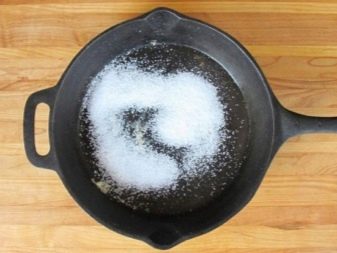
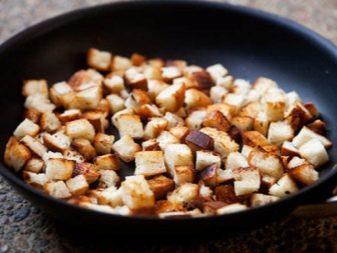
Therefore, first you have to wash the bottom with a detergent, then dry everything thoroughly, and then rub the container with fat or a piece of fat. During cooking, you will also need to use a fairly large amount of oil. By the way, a grill pan, that is, one whose bottom is corrugated, can also burn. Rescue measures in this situation will depend on what material the pan is made of.
Cast iron or aluminum roasting pan is calcined with salt or oil. The enamel container is not subjected to heat treatment, but is oiled, rubbed with fat or fat. Non-stick pans just have to be thrown away.
We should also mention the situation when only the central part of the pan burns, which is often found when cooking on a gas stove. Since the flame heats the surface as much as possible above itself, the food in this part cooks faster and, as a result, sticks to the surface. To solve the problem, help will come special fire divider. The essence of this device is that the heat from the flame begins to spread evenly throughout the bottom of the cookware used for cooking.
When a Teflon pan burns, it is necessary to act carefully so as not to damage the surface. Experts recommend trying to restore coverage. using ordinary vegetable oil. First, the fryer is washed and dried, then it is filled with a tablespoon of vegetable oil and heated until it spreads out along the bottom. After cooling the container, you must use a paper towel, with which you should rub oil into the surface. Repeat this procedure periodically - after approximately every thirty washings. Cleaning Teflon is also better not trivial, but with a tablespoon of mustard powder diluted in water and left inside the pan for 30 minutes.
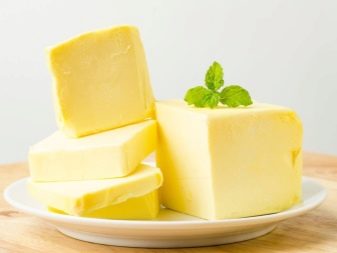

Can I use a damaged non-stick coating?
When a frying pan with a non-stick coating begins to burn, then the problem is that the protective coating has stopped working. This probably happened because Dishes used incorrectly: brushed with hard sponges and scratched with metal spoons. Or the expiration date of the dishes has ended banally. In the second case, the pan should simply be thrown away, but in the first you can try to reanimate the utensils. First, water is poured inside, into which soap chips and a small amount of vinegar or citric acid are added.
Then the dishes are put on fire and brought to a boil. On the plate of the container you have to stay for about a quarter of an hour, after which the liquid is drained, and the bottom is wiped with a soft sponge. Following the frying pan to be dried, oil the bottom and try to use for cooking.
In the event that the food still burns, it's time to throw the roasting pan.
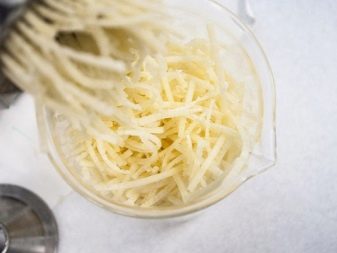
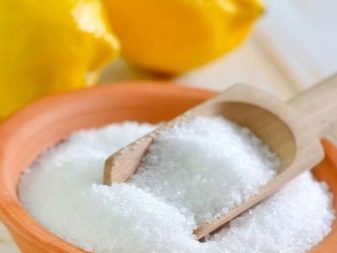
How to burn before first use?
Frying pans can be prepared in a variety of ways. However, some components of the algorithm always remain the same. At the first stage, the dishes are washed well and must be dried until all droplets of liquid disappear. For washing, warm or even hot water is used. Calcination itself occurs on low heat or at an average oven temperature. If salt is used, then it is better to take stone, and if oil - ordinary unrefined is enough. After the procedure, salt is poured, but the oil is only slightly wiped until excess fat is removed.
The "oil" roasting pan needs to lie down in this form for several days, after which it will have to be washed again and already used for cooking. After salt calcination, the container also remains intact for a short time.
The calcination itself is better to repeat from time to time, since the fat film tends to thin and break during operation.
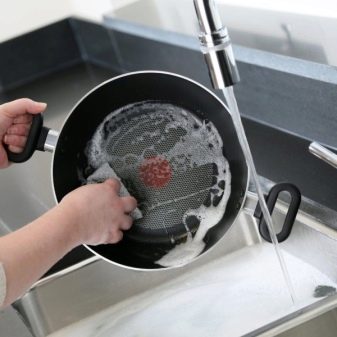
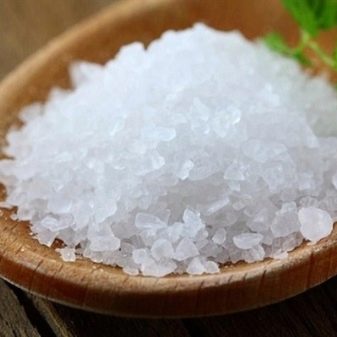
Proper operation
In order to use the pan without problems for many years, you must also adhere to the rules of use. Regardless of the material of manufacture, when cooking, add a thin layer of oil, instead of which you can also use fat. As soon as the fried food absorbs the existing product, it is necessary to add a new portion, which is also finely spread over the surface.
In the case when the fryer is made of aluminum or other metal, characterized by the presence of pores, apple cider vinegar will come to the rescue. This ingredient is being added. after the bottom of the pan is oiled and heated. Direct cooking begins when all the vinegar has evaporated. In principle, a small amount of salt can be added to the vegetable oil already distributed in the pan. Excesses are removed with paper towels or napkins.
Spatulas, spoons and other cooking tools should not be metal, as they easily and quickly disable the surface of the pan. The choice in this case should be made in favor of wooden, plastic or silicone items. Primary calcination is mandatory for pans made of cast iron and aluminum. Moreover, putting dishes in the oven is allowed for a period of not more than an hour, and it is worth removing from the stove even earlier - on average after 40 minutes.
Proper cooking techniques can also help prevent food burns. It is important to choose the right temperature regime based on the processed product. For example, a stronger fire is turned on for meat, but vegetables and fish are perfectly prepared both on medium and on a rather small one. The flame diverter should always be used when the frypot has a large diameter. Cookware is best taken absolutely clean and coated with a natural non-stick coating (in the case of aluminum and cast-iron containers).The steel pan warms up well before cooking.
Oil is either poured onto a pre-heated skillet or heated with it. Heat-treated products must first be brought to room temperature naturally. If some of them were rinsed under the tap, they should be wet first. Putting pieces to the bottom is recommended in one layer.

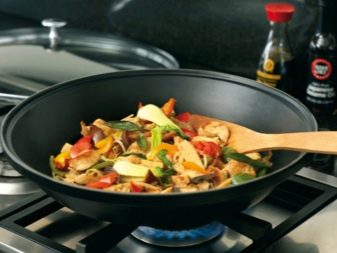
How to care for dishes?
Care of the pans should be thorough, but careful so as to wash off all food residues and not scratch the surface, which, in turn, contributes to the burning of dishes. It is better to immediately remove hard and metallic sponges and brushes from the household. To extend the service life, it is recommended to clean the dishes with soft sponges made of natural materials.
It is possible to store the dishes only in dried form. If this rule is neglected, then mold forms on the surface, which, in turn, negatively affects the non-stick features. Besides, do not store copies of “one in another”, especially containers with Teflon coating. Best kept pans on a special stand, without loading them on top of other dishes. As for the dishwasher, its use is only welcome in the case of steel pans.
The remaining containers with a natural or industrial non-stick coating will have to be washed by hand, so as not to shorten the life of the coating.
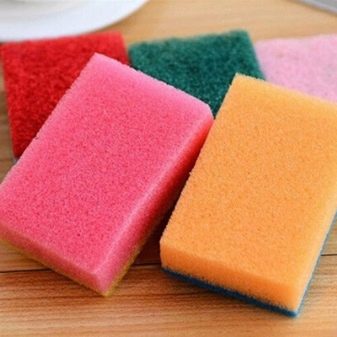

What to do if a pan burns, see the next video.
